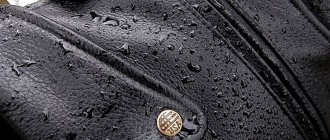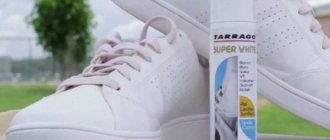At what temperature can you wear a jacket?
A woman's wardrobe is incredibly diverse, and this also applies to outerwear. A girl may have a whole closet full of different types, differing in color, style and, of course, the degree of protection from the cold. And of course, the more options there are, the better.
However, the transitions between seasons are not so easy to catch , which is why you can easily catch a cold. And even the weather forecast is not always able to help, because many simply do not know at what temperature they can wear a lighter or warmer jacket. And if you are one of them, you are lucky to get to this article!
How much filling should a winter jacket have?
60 g - recommended at temperatures not lower than 0 degrees; 80-100 g - withstands down to minus 10; 100-150 g - for frosts down to -15-18 degrees; 150-300 g is the maximum insulation, which in theory can withstand cold down to -50 degrees.
Interesting materials:
What is site moderation? What is moderation? What was my Skype login like before? Like, what is this in Russian? Who is this young specialist? How many years after graduation is a young specialist? Milk and cucumber what will happen? What is a monologue in Russian? What is polyurethane foam? MOP what is it in housing and communal services?
Temperature conditions for fillers
When sewing a down jacket, natural and synthetic insulation can be used, and with the development of scientific thought and the advent of new innovative materials, the position of natural down has noticeably weakened. Although leading manufacturers traditionally position swan, goose, duck and eider down as the best fillers. Consumers should be aware that down-filled winter clothing comes in different quality and may not protect you from the cold at all. In order not to make a mistake when purchasing, you need to understand the following “little things”, usually written on the label: Ratio of down and feather – 100% down filling is used in very rare cases, for example, for insulating polar explorers’ suits. Typically, down is mixed with bird feathers in certain proportions, which are designated as follows: 85/15 - which means that the filler consists of 85% down, 15% feathers. There is a direct dependence of the temperature regime of outerwear on the ratio of down and feathers:
50/50 – +5°С – -5°С; 60/40 – up to -10 °C; 70/30 – up to -20 °C; 80/20 – up to -25 °C; 85/15 – up to -30 °C; 90/10 – up to -40 °C;
Not only the presence of fluff, but also its quality determines the thermal effect. The main indicator of quality is the density and elasticity of the filling (Fill Power); up to 400 – very low standard; 450-500 – average sample; 550-750 – high standard; above 750 - elite standard, withstands extreme temperatures below -35 ° C, used only for special equipment; The labels contain the following designations: CLO 1, CLO 2, CLO 3. They are used to characterize the ratio of weight and heat transfer resistance. The CLO 3 marking indicates that the winter down jacket is designed for the most severe cold weather.
Modern synthetic insulation copes well with cold weather: bio-down - down to -35 °C; synthetic fluff, thinsulate, holofiber, thermofin, polyfill – down to -30 °C; innovative artificial material Alpolux, which is used when sewing down jackets presented in the Velitskybrand online store, - up to -35 ° C; synthetic winterizer - a once very popular insulation material that warms only up to -15 °C; isosoft – up to -25 °C.
Membrane
In order for the winter down jacket to be 100% waterproof and to protect it from winds, an innovative membrane coating is applied to the fabric. This is the thinnest film made of porous Teflon, exclusively waterproof polyurethane or durable polyester with special impregnation, sometimes two-layer, which is “welded” to the outer fabric in a special way. This technology effectively repels moisture from the outside, but allows it to evaporate from the inside, preventing a person from sweating. When moving, membrane clothing creates a stable microclimate around the body, equal to approximately 33-34 degrees. But you need to remember that the membrane only protects from external moisture (rain or snow), but not from frost. Therefore, even a down jacket-blanket with a membrane, but without high-quality insulation, will be cold at -10 ° C.
Useful tips for caring for down jackets
High-quality down jackets can last for dozens of seasons if they are properly cared for. No extraordinary care conditions are required, just try not to let the down in the down jacket get wet, and if this happens, dry it as quickly as possible. The down jacket should be stored flat on hangers. Read the care labels carefully!
Pay special attention to the washing process. We'll give you some practical tips for washing in the washing machine.
- For washing, set the softest and most delicate program.
- Be sure to fasten all zippers and buttons
- Use special liquid detergents for down jackets
- A washing temperature of 30 degrees Celsius is quite sufficient
- Turn on the extra rinse mode for better rinsing of the powder.
- Minimum spin speed: when wet, some down jackets become very heavy and the machine simply cannot cope with the spin cycle. In this case, you must press it manually.
- Place 3-4 tennis balls in the washing machine drum.
- The down jacket is dried flat in warm and sunny weather on the balcony or bathroom
- During the drying process, periodically fluff the down jacket, straightening the down.
- After complete drying, you can put the down jacket again in the washing machine along with 3-4 tennis balls and turn on the spin mode (without washing and without rinsing). A centrifuge with balls should beat the filler a little more and make the clothes more voluminous.
Discuss on the forum
When can you start wearing a women's winter jacket?
Often the moment when you can start wearing a women's winter jacket comes suddenly. The most common opinion is that when the temperature drops to o . At this moment, the air itself becomes frosty, and if under your jacket you are dressed the same as a week ago, then winter outerwear better resists the cold’s attempts to get inside.
At first, there is no need to take out all the winter paraphernalia from the depths of the closet, like a scarf and mittens. While the weather is hovering between plus and minus, you are unlikely to freeze even without a hat.
It is worth making an exception to this, such as an icy wind. Squally and gusty, it knocks down the feeling of air temperature by several points. So watch out the window to see how windy it is outside before deciding how to dress.
A jacket is simply an indispensable element of a woman's wardrobe , since it is not only warm, but also often waterproof. That is, if you prefer a coat, for example, for wet days it is better to get at least one such alternative item.
At what temperature can a women's down jacket be worn?
Often, girls choose a down jacket for the winter. This is due to its warmth, versatility, color and style variability. And it is preferable to wear this type of outerwear when the frost is especially severe . The advantage of such a thing is that it is elongated, completely closed, it can be buttoned up to the chin, ensuring that the cold is blocked from all sides. It also often has a hood, which is simply irreplaceable during snowfall.
It practically doesn’t matter at what temperature a women’s down jacket can be worn - it is suitable for both warmer and very severe periods of winter. At the same zero degrees, it is quite acceptable to wear it, but, of course, the remaining elements of the image should not be too warm .
As a rule, you just want to put it on as soon as possible, because it looks stylish and attractive. You will look especially cool in it if the design includes lush natural or high-quality faux fur. It chicly decorates the hood and even pockets - this is generally the trend of the season !
At what temperature do you wear a demi-season jacket?
In autumn and spring, it is especially difficult to guess with outerwear, because in three months you can change four types of it! At first March , we still wear winter clothes , since the weather does not change at the snap of a finger. Then gradually the time comes when it is already hot in them, and they are replaced by a demi-season wardrobe. After that , it’s time for windbreakers and cardigans, which don’t provide much warmth, but only protect from the piercing wind. And finally, the warmth comes - and there is no need for outerwear at all.
The approximate range at which temperature a demi-season jacket is worn starts from 5 and ends at 20 degrees Celsius . Taking into account individual characteristics, this indicator may shift by plus or minus five degrees . In addition, again remembering the wind, we can say that even at twenty degrees of heat, a jacket is sometimes necessary when the air is still damp and not at all summery.
However, we have come to the moment when you can wear an autumn jacket without insulation. In a T-shirt, for example, and a windbreaker, you can feel quite comfortable, and on days when the morning coolness gives way to the afternoon heat, you can take off the second one in the afternoon.
What to look for when choosing a down jacket
Compound
If a down jacket doesn't keep you warm in winter, why is it needed at all? Before buying, check what the material and filling are made of - this will determine how long the item will last, whether you will freeze in it, and whether the jacket rustles when you move.
The best fillings for a winter down jacket are natural ones, such as feathers or down/feather. Technologies do not stand still, so you should not discard artificial insulation, such as holofiber or thinsulate. The latter warms even better than down! But for the top material you should choose synthetic fabrics that repel moisture and are easy to care for.
Tailoring quality
Another criterion that you need to pay attention to when choosing a down jacket for the winter. Before purchasing, be sure to check all seams, locks and fittings (buttons). Threads should not stick out from a high-quality warm jacket, otherwise there is a risk that the item will fall apart after the first wash.
Size
Try on a winter down jacket with warm clothes - this is a good life hack that will help you avoid impractical models. It is important that you feel free, even if you wear a bulky woolen sweater or jacket under a down jacket. Don’t try to buy a warm down jacket one size smaller - this will only fit your figure and visually add a couple of sizes.
You should not choose oversized down jackets: they will not become reliable allies in cold and windy weather.
Hood
It all depends on your preferences. If you choose a down jacket with a hood, be sure to wear it to see how its shape suits you and make sure it doesn't fall into your eyes. If the hood comes loose, check all rivets or locking to avoid any unpleasant surprises this coming winter.
Current design
No matter how much we love trends, when it comes to down jackets, it is better to choose more classic models that you can safely take out of the closet for several seasons in a row and not look like a guest from the past. How to recognize a model that will not lose relevance? Loose fit, midi length or just below the hip, minimal decor and basic colors - you can’t go wrong with this!
Details
You shouldn’t chase trendy models; it’s better to pay attention to details. We advise you to choose a down jacket with a hidden zipper - this will prevent you from freezing. The ideal model should cover the neck, otherwise it will be of no use. Check if the sleeves have knitted cuffs to protect you from the cold.
What can you wear at 21 degrees?
Any summer clothes will do, but wear them so that your arms and legs are covered, then you will definitely not freeze in this weather and you will not be hot. Suitable jeans, trousers, sweaters made of thin fabric with long sleeves, blouses with long sleeves, long skirts, knee-length skirts, dresses with long sleeves.
Interesting materials:
How to tag a person on Instagram under a photo in the comments? How to tag a person in a story on Instagram? How to tag a person in the comments? How to tag a person in a post on Instagram? How to tag a person in Stories on Android? How to tag a person in Stories on VK? How to tag a person in your story? How to stop a cat from lunging at people? How to stop a rooster from lunging at people? How to stop a rooster from attacking people?
Is it possible to wear an autumn coat in winter?
Any styles and colors - it always looks stylish and goes with many things. And what a shame when, with the onset of winter, you have to put it away in the closet and take out a down jacket to replace it. But if you insulate yourself correctly, then in an autumn coat you can withstand severe cold, continuing to do so until spring.
Interesting materials:
What is oversized in clothes? What is patchouli? What is paprika Wikipedia? What are parallel lines grade 7? What are sautéed vegetables? What is a pedicure and why is it needed? What is a veil in the dictionary? What is a DME transplant? What is a personal trainer? What is ping in Among AS?
Designation on the label
1. The most important thing in choosing a down jacket with natural filling is the down-to-feather ratio. The manufacturer designates it with numbers separated by a dash (for example, 80/20). Here 80% will be down, the remaining 20 will be feather. The more fluff the filler contains, the warmer it is.
2. The CLO designation indicates the lowest permissible temperature. 1CLO - up to -15 degrees, 2CLO - up to -25, 3CLO - minus 40 and below.
3. Each jacket always indicates the filling that is inside. Read labels carefully to choose the right down jacket.
4. Fill Power - an indicator of the ability of fluff to return to its original shape. The higher the indicator, the lighter and warmer the jacket will be. Choose products with a Fill Power of 500 units or higher.
Down jacket care
In order for a down jacket or jacket with any filling to serve you for a long time, you need to follow the rules for washing outerwear:
- Do not wash at high temperatures. 40 degrees will be enough.
- Use only liquid laundry detergents. Regular powders, even of the highest quality, are not completely washed out of jackets.
- Choose the right spin. There is no need to squeeze the triggers in the machine at more than 400 rpm. The product will take longer to dry, but then its appearance will be preserved.
- No need to soak for a long time. If you need to soak a specific stain before washing, you can leave the detergent on the jacket for 5 minutes.
- Use laundry balls. There are special balls for washing jackets and down jackets. They prevent the filler from getting together in one place and forming lumps.
How to care for a down jacket
Wash
If your down jacket is machine washable, we recommend purchasing a special detergent that will take care of the filling and material and will not leave streaks. It is better to wash without soaking, in a buttoned state. It is not recommended to wash a down jacket often, otherwise there is a risk that the filling will roll off.
Drying
The down jacket should be dried naturally. It is better to unzip it and unfold it on the dryer away from radiators or heaters. The main thing is to take care of the insulation. Periodically, you can shake the down jacket and put it on the back side. This will help the jacket dry evenly, which will help avoid lumps.
Dry cleaning
Down jackets are best left to professionals. After washing at home, the filling may lose its shape, roll up, or begin to creep through the seams. Thanks to dry cleaning, the down jacket will last much longer.
Daily care
There are often traces of foundation on the collar of a woman's down jacket, but washing it every weekend is not entirely reasonable. It is better to stock up on special wipes to get rid of small stains or marks. They will not leave streaks and will do their job perfectly!
When should you wear a cardigan?
In the case of a cardigan, you have to think especially carefully. This type of clothing can have a different composition, and therefore provide warmth to its owner in different ways. And yet, there is a guideline for when to wear such clothes. This should be a period of variable humidity and windiness, when it is not yet too cold, but there is a risk of hypothermia. As is already clear, there are regularly times when you should wear a cardigan, so you should definitely think about buying such a thing.
Monitor the weather and your own feelings in order to change your outerwear to something more current in time. Your comfort is very important, so look for several types of jackets for different periods of life. Then no weather will be able to take you by surprise!
Source
Outer material
Polyamide materials have proven themselves best - Taslan, Jordan, nylon. A winter down jacket made from this fabric retains heat perfectly, has high water-repellent properties, and is extremely wear-resistant. Outerwear made of polyester is also very warm, but due to the excessive rigidity and bulk of the material, it is not so comfortable, especially for long models, such as a down jacket-blanket. Other popular combined fabrics, from which winter clothing turns out to be of good quality, it “breathes”, holds heat well, does not allow moisture to pass through, and lasts a long time: Teflon, Oxford, Cordura, Jordan, lacquered raincoat fabric, Greta, Duspo and others. Sometimes, to enhance wind and water resistance, fabrics are treated with a special impregnation. This “trick” adds -5 °C to the down jacket’s temperature range, but makes everyday care of it somewhat difficult (do not iron, wash only by hand at 30 °C, do not use aggressive powders).











